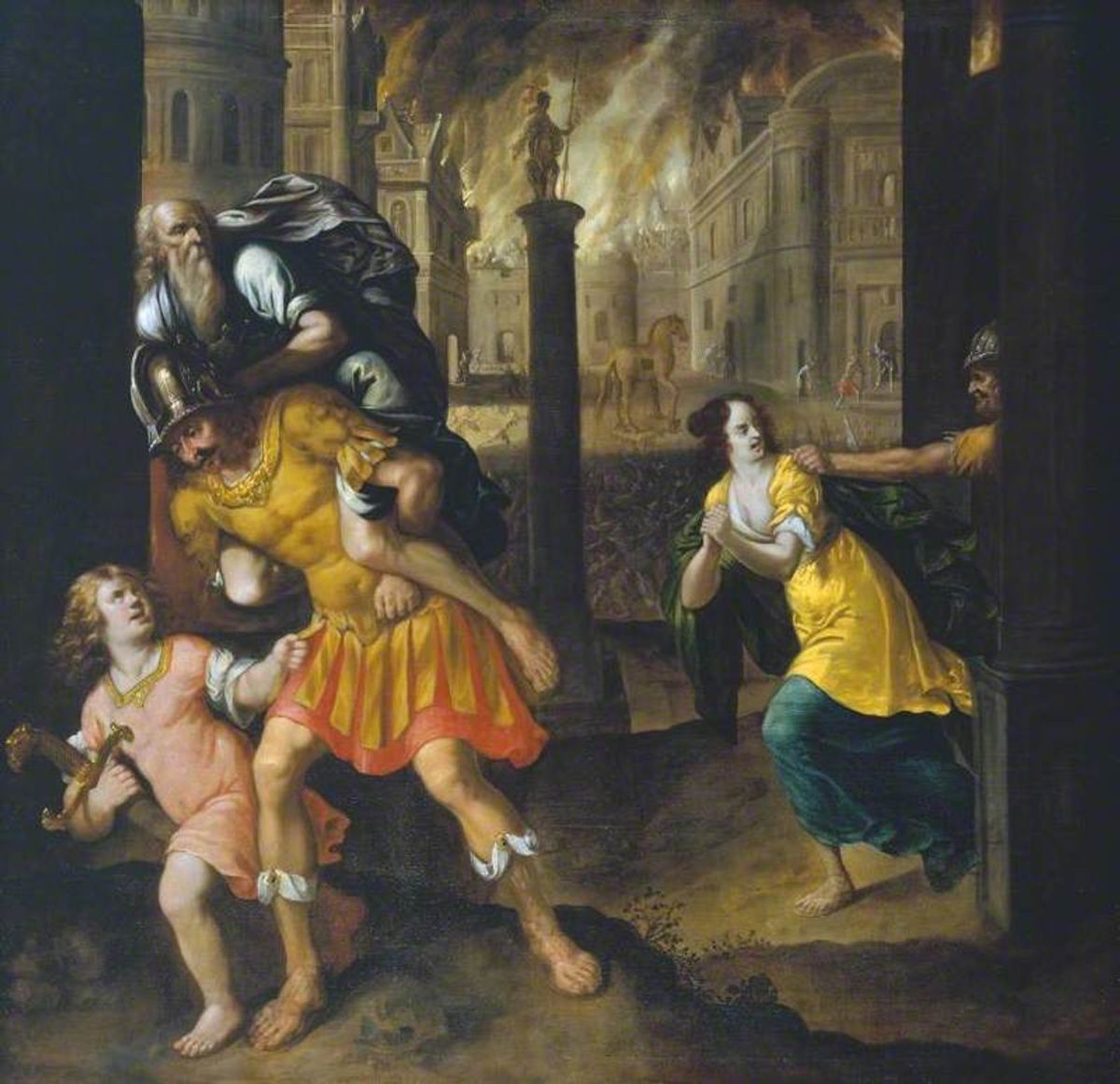A 17th-century painting by Henry Gibbs, which was looted by the Nazis and bought by Tate more than 30 years ago, will be returned to the descendants of the Jewish dealer who once owned the work.
The painting— Aeneas And His Family Fleeing Burning Troy (1654)—was one of 66 works seized by the Nazis from a gallery owned by Samuel Hartveld in Antwerp on 26 March 1942. According to the Spoliation Advisory Panel, which rules on the ownership of disputed works of art in UK public collections, Gibbs’s work, which depicts scenes from the Latin poem The Aeneid, was taken by the Nazis as “an act of racial persecution”.
Maria Balshaw, Tate’s director, says in a statement: “Although the artwork’s provenance was extensively investigated when it was acquired in 1994, crucial facts concerning previous ownership of the painting were not known.”
Hartveld and his second wife Claire Melboom lived in Antwerp, but left before the German occupation on 10 May 1940. The couple’s son, Adelin Hartveld, remained in Belgium and joined the resistance; he was sentenced to death by the Nazis in January 1942.
A report dated 10 April 1945 says that the Hartvelds’ property was confiscated by the Germans and placed under administration. It continued: “the room with the paintings in it was bought by [an individual] named Mr Van den Broek and continued to be operated by him”.
The Spoliation Advisory Panel says that the Gibbs painting was sold by Van den Broek to the Aramex Shipping Company. However, when the Tate acquired the work in 1994, it was not from the Aramex Shipping Company, but from the Belgian Galerie Jan de Meere. “Some of [Hartveld’s] artworks may have changed hands several times since 1940 and are believed to be in galleries across Europe,” explains the UK Department for Culture, Media and Sport.
The claim for the Gibbs painting was made on 10 May last year on behalf of the Sonia Klein Trust for the heirs and great-grandchildren of Samuel Hartveld. “The staff at Tate Britain were open minded and prompt in their approval of the Spoliation Advisory Panel’s recommendation,” say the trustees of the Sonia Klein trust.
An online Tate conservation report (2020) describes how “there are old lines of cracks in the paint, relating to the inner edges of a former stretcher or strainer… Gibbs’ painting technique demonstrates both a certain level of planning and his strategic use of materials”.
Over the last 25 years, the Spoliation Advisory Panel has received 23 claims with 14 works being returned to the heirs of their former owners. Last year, in a high-profile case, the panel ruled that a trio of works by Rubens should remain with their current owner, the Courtauld in London.


